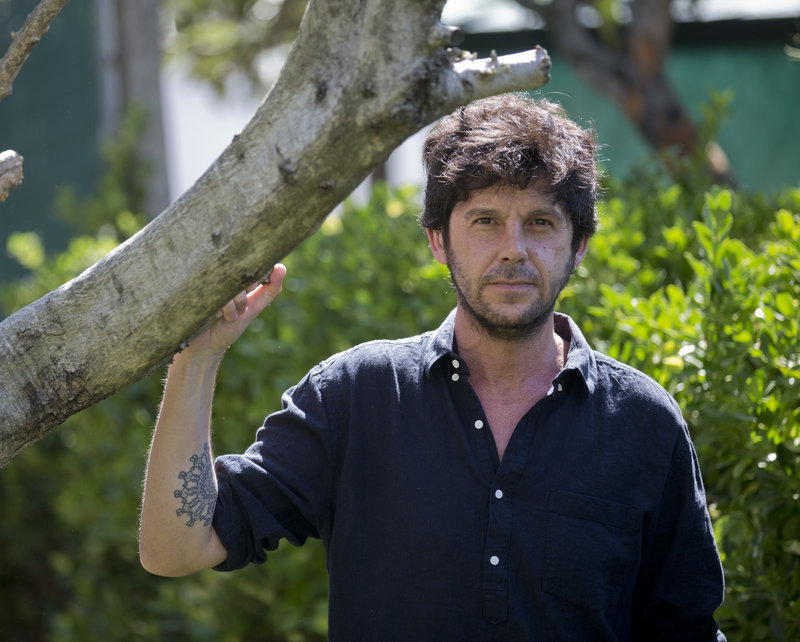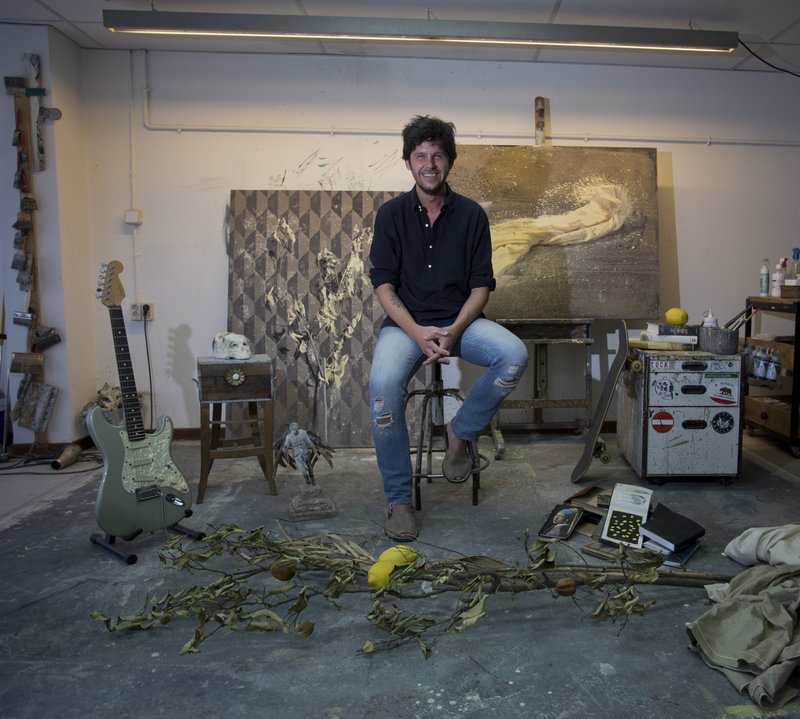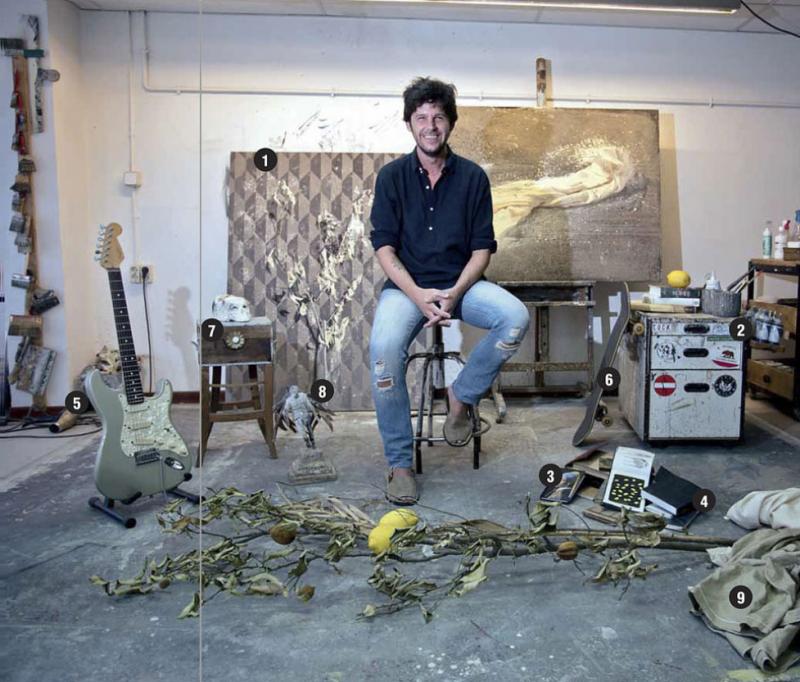Joan Mateu
Painter
Making the ordinary extraordinary
my space - interview
The making of an artist
Joan Mateu Bagaria was born in 1976 in Salt (Girona) into a family of watercolourists. He grew up surrounded by art but it was not until 1999 that he decided to study it at La Llotja in Barcelona. In 2002, he had his first solo exhibit, followed by more exhibits in Europe and the US. He has won a number of prizes and is the author of the book El llibre de l’any, with writer Vicens Pagès.
Joan Mateu
We visited Joan Mateu in his studio in the neighbourhood of Les Pedreres in Girona, an oasis of peace and greenery overlooking the city centre. Mateu shared with us some of the elements that are most important in his work at the moment.
1. Painting, and art in general, is about finding worlds that don’t exist, other realities, and playing with basic elements, such as this piece of cloth and the lemons from my neighbour’s lemon tree. It’s about looking for the essence of painting itself, more than just the topic, it’s what the search is about. With hyper-realism, you know perfectly well how the painting will end up. There is no mystery in the process. But this way, each painting leads you towards new places and opens up small windows that lead to the next step, it’s the evolution of it. Nowadays I like to play with textures. In fact, you never know if it is finished or not. I decide it’s finished when it convinces me.
2. Piece of furniture from the 70s, from my father’s office. I began using it more than 20 years ago when I first started painting, and it has stayed with me ever since. I tried other things that were more modern or more comfortable, but I never felt as at ease as with this one. I added the colours on one side, kept on adding accessories and adapting it to my needs. The two bowls of water are also my father’s, as he is a watercolour painter, and they date back to the same period. As for colours, I’ve got a lot here, but I use mostly pastels. The colours I’ve got are mostly for very occasional touches, basically I paint with pigments and wall paint. I also like mixing different types of paints for the effects and the different hues you can get. The importance of a painting is its pictoric richness, for it to be attractive by itself, so that it doesn’t need too many tricks.
3. Books. Reference points for me, which is the most important thing. Actually, such a thing as a self-taught painter doesn’t exist. Your painting is the result of various influences and your environment. We all have our reference points: mine include Hopper and Monet, and they have varied over time. At the beginning, I used to like more hyper-realistic painters, such as Antonio López, and now my taste is more eclectic. Yet even now when I see Monet I still like him; what he was doing at the time was so groundbreaking. In a way, art goes by cycles, as well. The abstraction and wisdom he had in the treatment of colour is still totally valid today. I also have here From Hell, a great comic about Jack the Ripper, by Alan Moore.
4. Notebooks. I always have one with me, even on my bedside table. I take note of everything that occurs to me; I make drawings, sketches, ideas for paintings...
5. Guitar. I have been part of a few bands and music is something that I will never give up. I play for myself, as a way to gain some distance from what I’m normally doing. When I’m in the middle of a painting, or doing something I am not convinced of, I need this break to see things from a perspective. I play, look at the painting, and ideas flow in. The music I play is basically 80’s punk rock. I listen to many styles but I always come back to the likes of Descendence, Dinasty, Bad Religion...
6.Skateboard. It is the same as with music. It matched the way of life and music of the time, the style that marked me and always accompanied me.
7. Small table. When I go to places I find wooden pieces, like old chairs. In fact, the upper part of this chair is part of that stool. I dismantle them and play with them and combine them with other items and materials I have, and new and unique things come out.
8. Sculptures. It’s a similar process as with the furniture. The wings of the angel are eucalyptus leaves and the back part is wood. I put together stuff I see, the rail is from an old house. It’s the same process: you get some elements together and you play with them.
9. Cloth, branches, lemons. These are elements that are the excuse or starting point to get to the pictorial. Cloth has a lot to do with my Costa Brava paintings, I started them because it reminded me of that. Cloth is a non-organic element, but is very expressive, so you can manipulate it the way you want.





